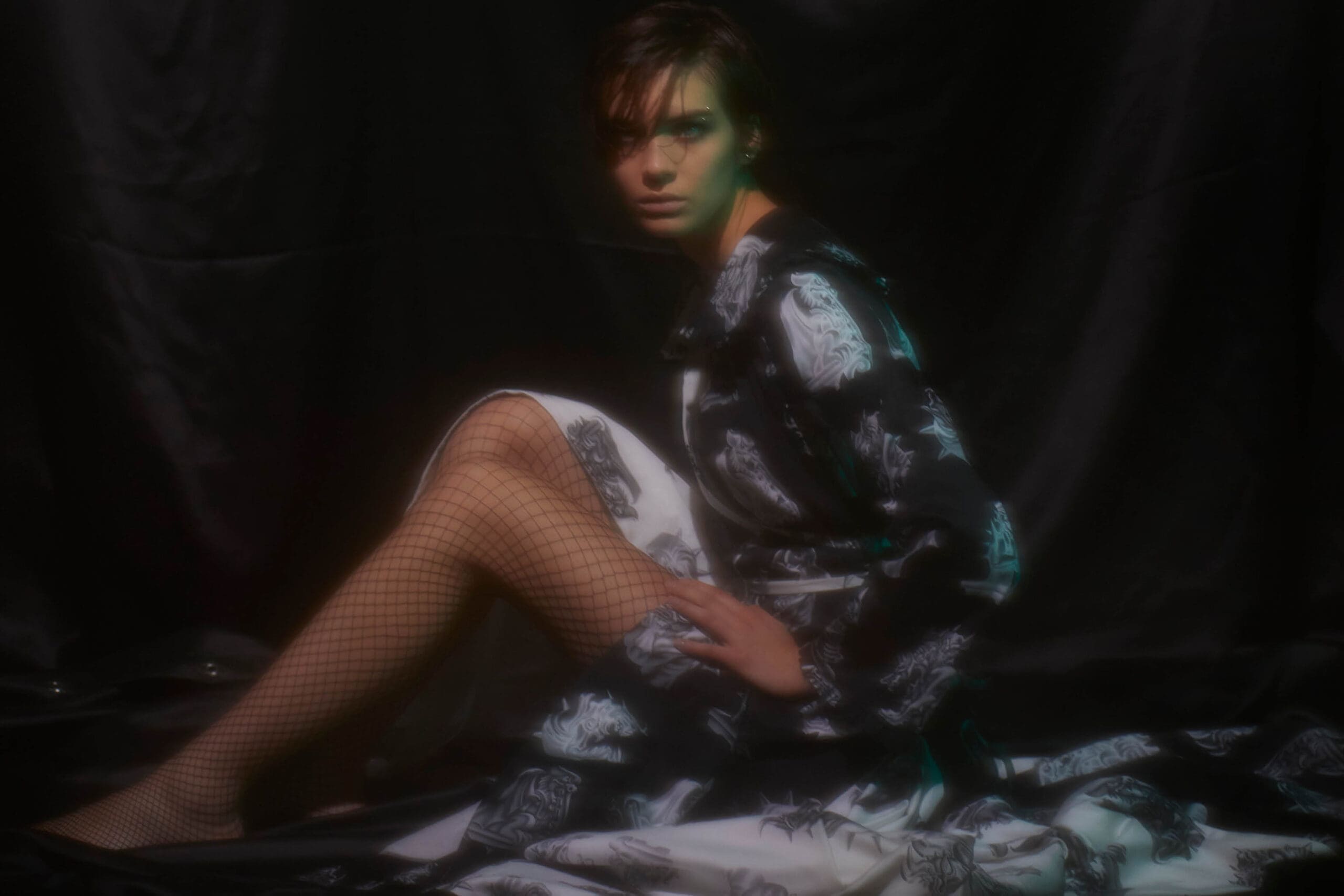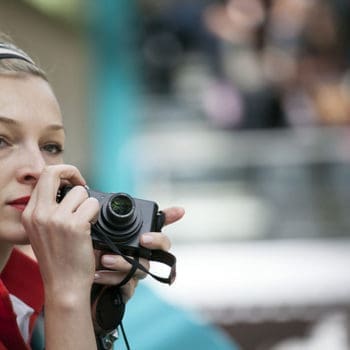Photography Peppe Tortora
Stylist Priscilla Cafaggi
Words Carolina Davalli
Model Diletta Paci @ Next Models Milano
Hair Giuseppe Lorusso @ Blendmanagement
Make up Sofia Foiera @ Blendmanagement
Stylist assistants Marco Spagnuolo, Lorenzo De Angelis
Editor-in-chief Valentina Ilardi
Heritage is a GREY project that gives voice to the far-sighted fashion generation of designers and emerging brands that are just establishing themselves in the contemporary scene.
For the 6th edition of Heritage, we are proudly presenting Florania, the independent, “solarpunk, circular and genderless” brand founded in 2021 by designer and illustrator Flora Angela. Radical and rebellious, the project’s mission is to change the rules in the fashion system creating a more conscious, collective and creative ecosystem.
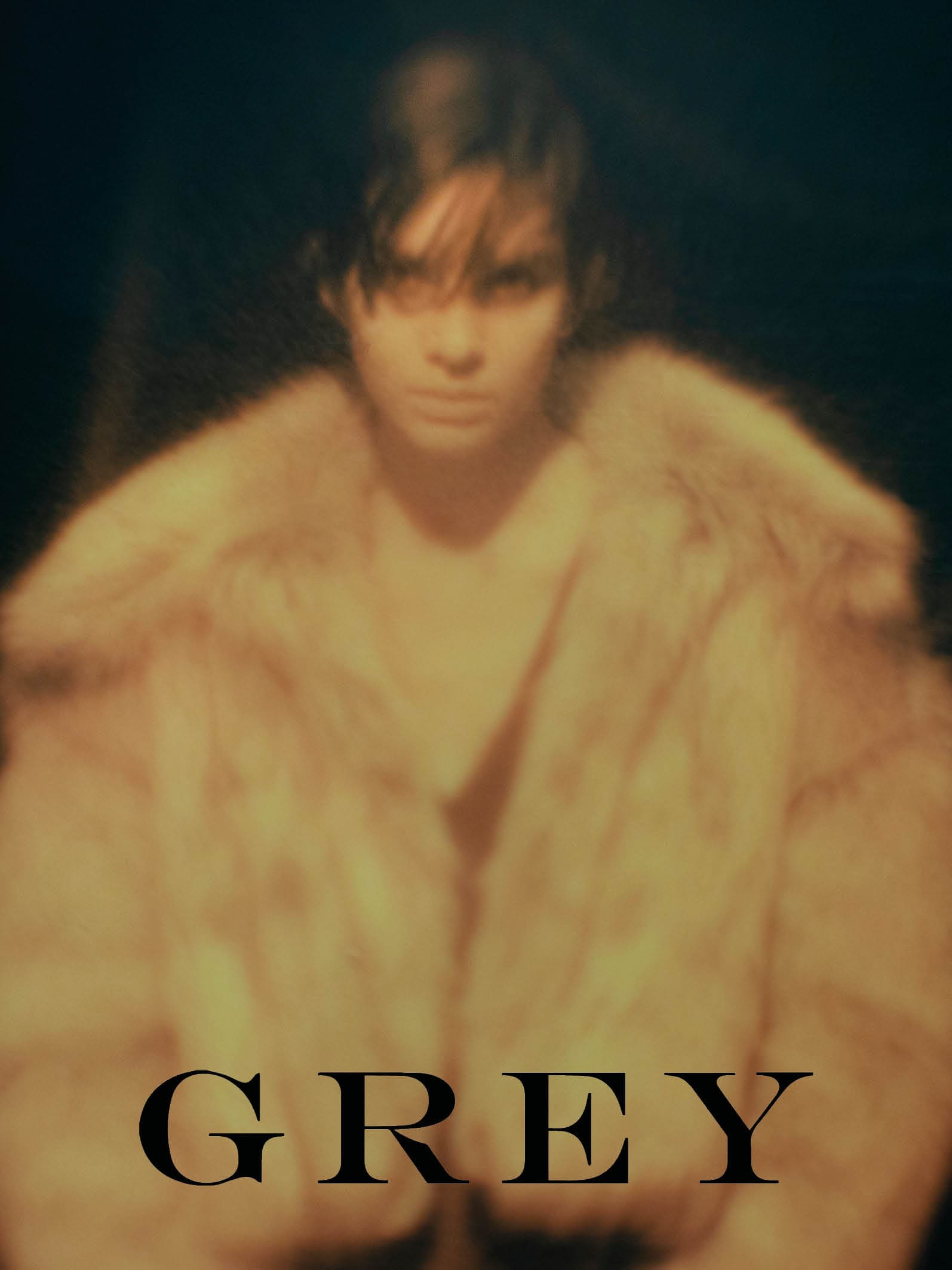
Describe your work just using movies, books or records’ titles.
The House of the Spirits (1982), The Dressmaker (2000), Planet Sauvage (1973), The True Cost (2015).
Which encounters shaped you as a creative?
I was lucky enough to jumpstart my career working for Miu Miu’s design department, just before graduating. This experience was of great importance for my creative growth. There, I met many professionals and had the privilege of assisting them with their work. In various subsequent roles as designer and illustrator, I encountered people who believed in me before I even believed in myself. They’ve been unexpected mentors, almost all of them were women.
Florania was founded in 2021. What are the milestones that stud the brand’s history up until now?
In 2021, right after the brand’s birth, we showcased our collection during Tanzania’s Fashion Week– it was such a surreal and beautiful experience! We also had the chance to present our work in New York and Tokyo thanks to a Japanese partner. In May 2023, we received the “Design for Change” award from Camera Nazionale della Moda Italiana and Max&Co, and in September we made our first appearance on the official schedule. Recently, I’ve been collaborating with Max&Co for a capsule collection that will be released in a few months. It has been such an incredible opportunity.

What are the main inspirations behind the brand’s collections and how did they evolve throughout the years?
Florania stems from the observation of the enormous quantity of fabric and garments present in our wardrobes and personal archives. I saw this abundance of materials as an opportunity to transform them into a new narrative, representing a niche of fashion practitioners that values craftsmanship, innovation, circularity, and ultimately design. From materials – which dictated how we should approach them–we shifted to sourcing our own pre-existing materials (always circular) according to our desires and the needs of the collections. Our aesthetic draws from the world of illustration, to that of animation and cinema: I imagine utopian worlds as the set of each collection. My reference points are Vivienne Westwood, Jean Paul Gaultier, Junya Watanabe, John Galliano, Miuccia Prada, Betsey Johnson, Olivier Theyskens, Ossie Clark, and Japanese streetwear.
Guide us through your creative process.
Before designing the clothing, I start by creating a comic, an artwork or an illustration. I like to imagine characters and somehow bring them to life on paper. Then I exchange ideas with my team through constant brainstorming sessions. The production phase follows: I visit the community of tailors we collaborate with and talk to various suppliers, which are local too. Then, it’s time for sewing, and finally the ideas take shape.

What does the word “radical” mean to you? And how does this concept apply to your line of work?
To feel a bit of anger allows us to create interesting alternatives for the future world and businesses. It enables the creation of the most audacious ideas. In my case, the founding principles of the brand and my daily life are: circularity, rebellion, and inclusion. Regenerative and inclusive design, the valorization of existing materials, and the restoration of the identity of discarded garments offer vital opportunities for work, innovation, and scalability.
Does your work as an illustrator merge into your practice as a fashion designer?
Certainly, the imagery from my illustration work helps me define the characters and worlds we are ‘evoking’ for our collections. If I describe them specifically with images, we can create a story and communicate it to those who produce and distribute it.
Are you a collector or hoarder of something in particular?
I collect mostly books and comics. For me, publications about the history of fashion, costume, art, mysticism, and symbolism are an infinite source of inspiration. I also collect Bao’s graphic novels from Coconino Press and other independent publishers, as well as Dylan Dog and other Manara comics. Not to mention novels, especially those with a touch of Magical Realism. I also have a vintage clothing archive with pieces dating from 1880 to 2010. I would like to expand it further in the future –currently, we own a very small studio.
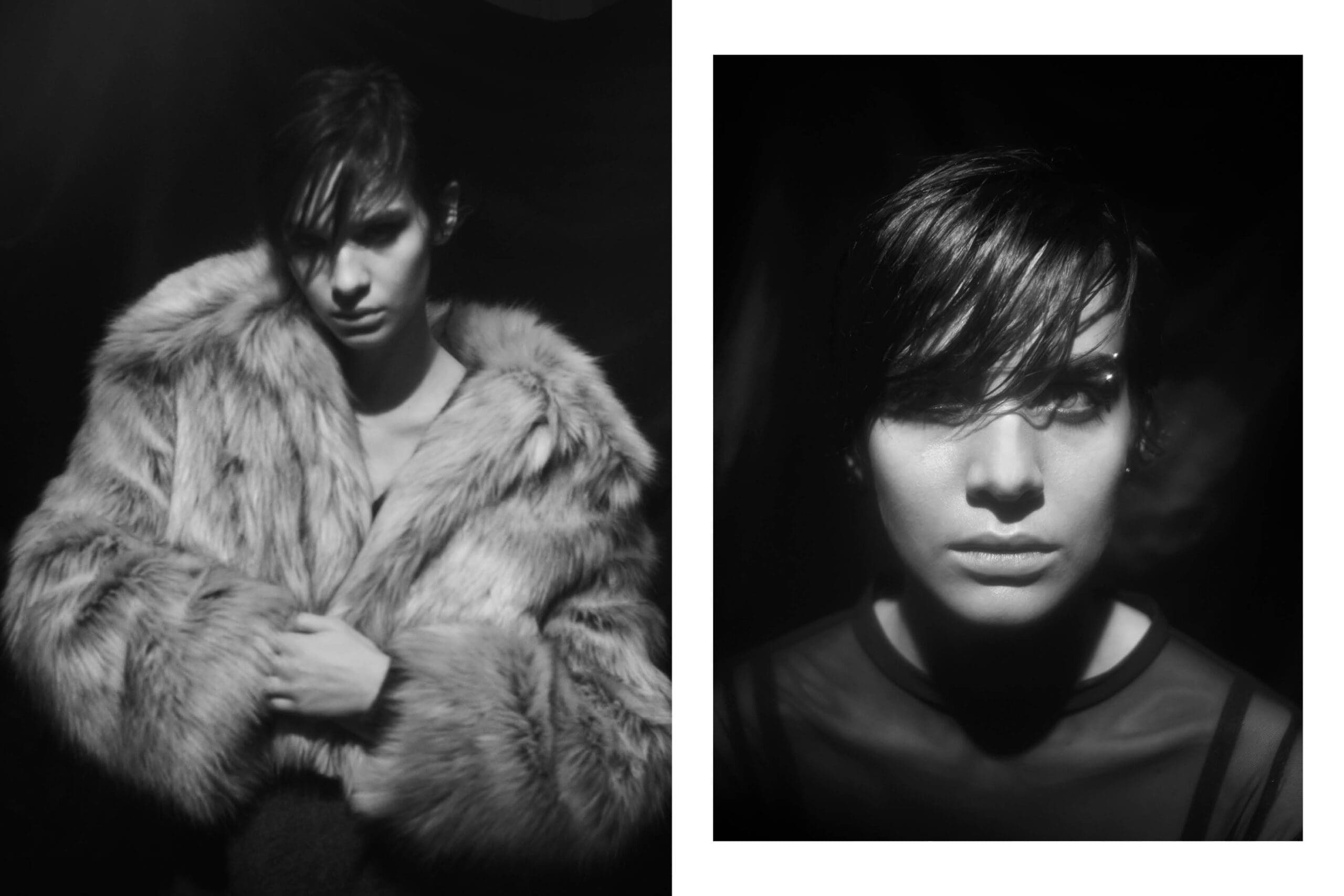
What is your personal definition of “Made in Italy”?
Our take on Made in Italy is actually quite unique, as our studio in Milan is a pioneer in collaborating with and supporting Community Ateliers, where the artisans learn how to sew with qualified pattern makers and seamstresses and provide themselves with a new future employment, while respecting and transmitting craftsmanship and the values of Made in Italy.
The project is greatly influenced by activism and feminist theories. What is fashion’s role in communicating these instances?
Many brands chase trends, and some people consider activist and feminist theories trends too. For me, aligning with social issues (and exploring them over time) not only means standing out as a brand, but also having a real impact on the system. I choose to support causes that truly ignite my passion and commitment, and to translate them into what I do. I want my clothes to be more than just fabrics or mere trends: I want them to be the representation of an alternative, both as visual representations of the cause and as manifestation of radical production practices.
How would you describe the brand’s community?
They are people who stand out more for their cultural and values differences than for their age or gender. They are circular-nauts, explorers and dreamers, rebels of clothing.
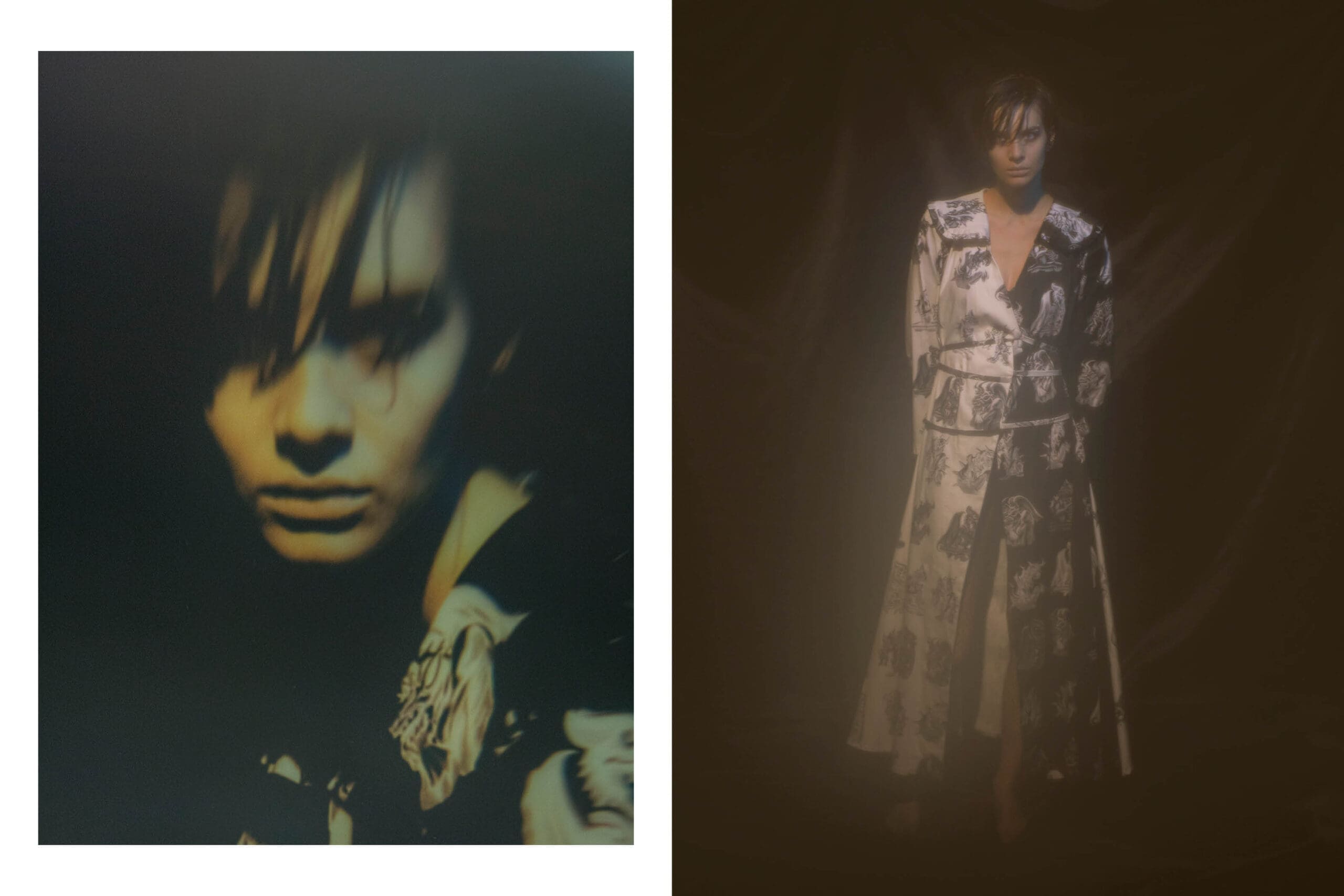
You often say that Florania makes its own rules. What is the number one rule of the entire project?
Nothing with a high environmental impact comes out of our studio. I refuse to produce items without a conscious and clean supply chain. Moreover, we don’t throw away anything that can be repurposed.
Does Florania have an archive?
Yes, we do have a collection of the best pieces we have created (as a ‘guide’ for the Florania of the future ), along with the most successful prototypes, some vintage pieces that inspire us, and hand-illustrated prints. We also archive many discarded garments and fabrics that we use later on to bring new upcycling projects to life.
Regenerative, genderless, glocal, solarpunk and collective: these are the keywords behind your project. Which other words are you planning to include in Florania’s future glossary?
Artisanal and agitated.
